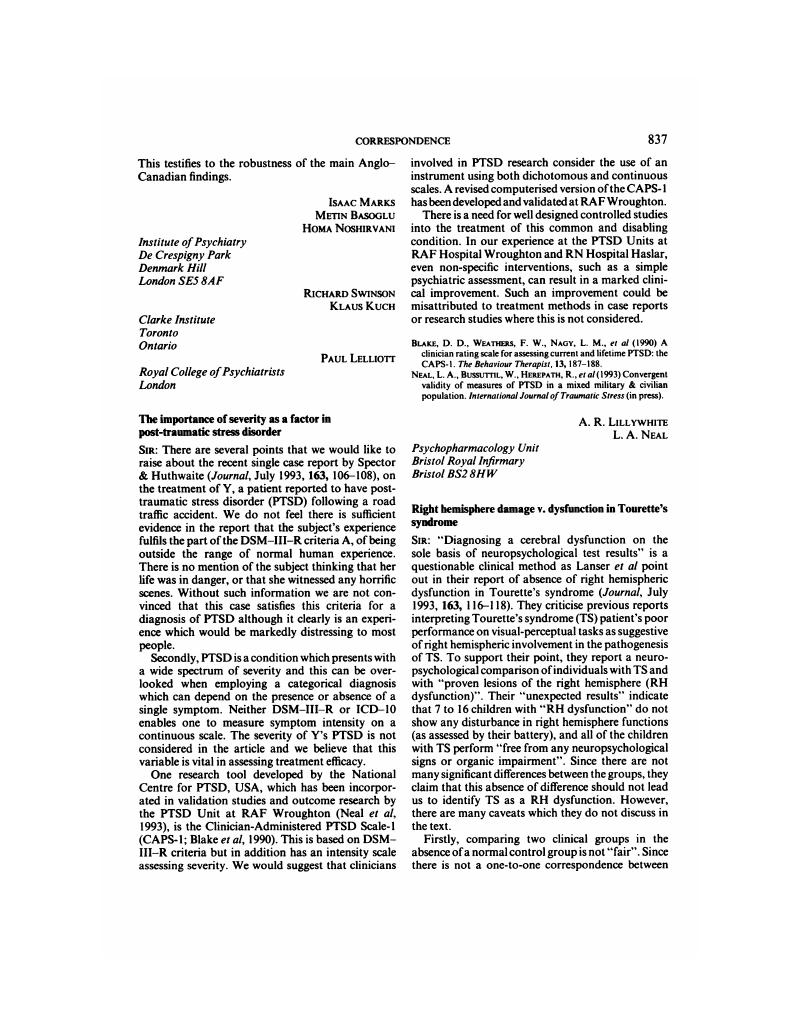No CrossRef data available.
Article contents
Right hemisphere damage v. dysfunction in Tourette's syndrome
Published online by Cambridge University Press: 02 January 2018
Abstract
An abstract is not available for this content so a preview has been provided. As you have access to this content, a full PDF is available via the ‘Save PDF’ action button.

- Type
- Columns
- Information
- Copyright
- Copyright © The Royal College of Psychiatrists
References
Insel, T. R. (1992) Toward a neuroanatomy of obsessive-compulsive disorder. Archives of General Psychiatry.
49, 739–744.CrossRefGoogle Scholar
Leckman, J. F., Pauls, D. L., Peterson, B. S., et al (1992) Pathogenesis of Tourette syndrome: clues from the clinical phenomenology and natural history. Advances in Neurology, 58, 15–24.Google Scholar
Pardo, J. V., Fox, P. T. & Raichle, E. M. (1991) Localization of a human system for sustained attention by positron emission tomography. Nature, 349, 61–64.CrossRefGoogle ScholarPubMed
Peterson, B. S., Riddle, M. A., Cohen, D. J., et al (1993) Reduced basal ganglia volumes in Tourette's syndrome using 3-D reconstruction techniques from magnetic resonance images. Neurology, 43, 941–949.CrossRefGoogle Scholar
Randolph, C., Hyde, T. M., Gold, J. M., et al (1993) Tourette's syndrome in monozygotic twins: relationship of tic severity to neuropsychological function. Archives of Neurology, 50, 725–728.CrossRefGoogle ScholarPubMed



eLetters
No eLetters have been published for this article.